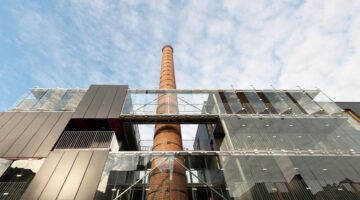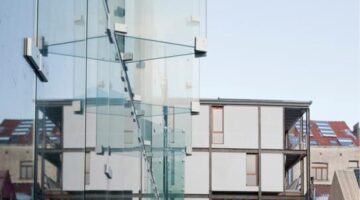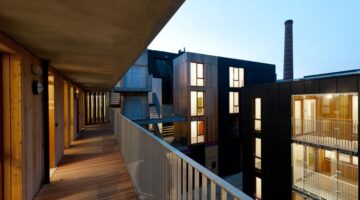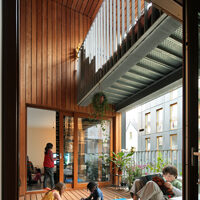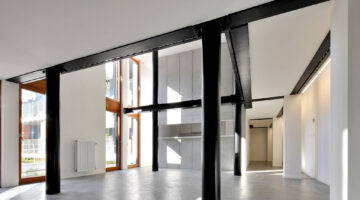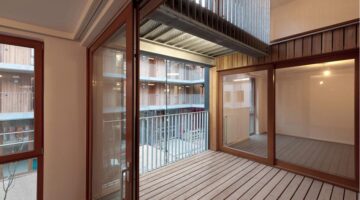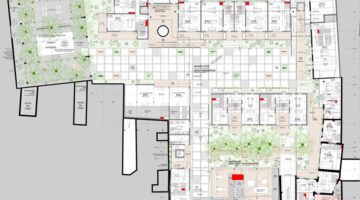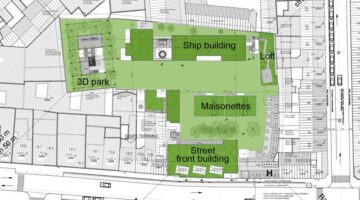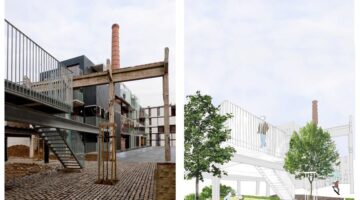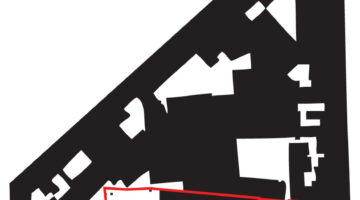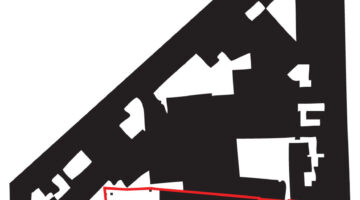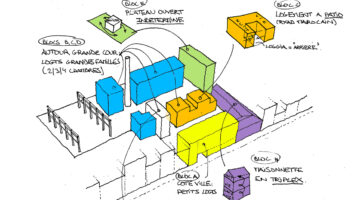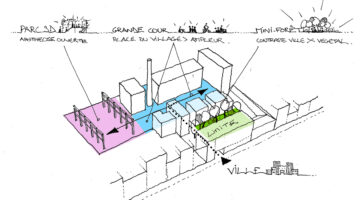Care and Living in Community (CALICO)
Main objectives of the project
The core activity of CALICO is the construction of 34 housing units and the establishment of a Community Land Trust (CLT) in Brussels, which provides an innovative model of community-managed housing. Moreover, CALICO is also an experiment in creating a ‘Community Care Model’, in which people interact at different liminal stages of life – birth, old age and the end of life. This addresses the ‘hyper-specialisation’ and ‘hyper-sectoralisation’ of care in Belgium and is directed towards organising care provided within neighbourhoods by its members, instead of institutions.
Date
- 2021: Construction
Stakeholders
- Promotor: Community Land Trust Bruxelles
- Promotor: CALICO
Location
Description
The Brussels-Capital Region (BCR) is currently facing a set of challenges regarding housing. Its dwellings have a low quality standard and there is a lack of social housing availability. These issues need to be added to an increase in rent due to speculative practices. Undeniably, all these challenges have a greater impact on vulnerable groups such as aging population or women. For them, the housing crisis is an addition to how an exclusion in the decision-making process, an institutionalized care system and at-risk situations due to poverty or isolation. For these reasons, there was a need to install a non-speculative model of housing that could provide the needed care for vulnerable groups from the community of neighbors.
Thus, 34 housing units were built following a Community Land Trust (CLT) scheme. This model ensures the financial accessibility of housing by separating ownership of land from ownership of buildings and providing measures to limit the speculative resale of assets. Historically, CLTs have been used in the United States and the United Kingdom, but they are an innovative practice in continental Europe, including Belgium. Importantly, CALICO focuses not only on the organizational and legal foundations of the CLT, but also on the community dimension of its inhabitants’ lives. This is obtained by including inhabitants in estate management and providing tools for deliberation and physical spaces for interaction (common and service areas).
How does a CLT work? Basically, the CLT in Brussels is a non-profit organisation, that share three basic principles: separation of ownership of land and buildings, permanent affordability of housing for low-income households via a formula that limits the increase in value of the property, and joint governance between owner, inhabitants, and local government. The land is considered to be collective property, while households individually acquire buildings for a lower price than in a standard real estate transaction. The Brussels CLT is made up of two organisations: the Brussels CLT Public Utility Foundation, which owns the land on which the housing units will be built, and the ASBL Brussels CLT, which is in charge of the daily management of the foundation’s assets. The ASBL Board of Directors has tripartite representation: building residents, people from the surrounding community (inhabitants and associations) and appointed representatives from the Brussels-Capital Region each having one-third of the seats. Apart from CLTB, CALICO includes two cooperative schemes (Pass-ages and Angela.D) in the project that manage some of the housing units, one focusing on women and the other on elderly people. The three organisation are now part of the CALICO association, that is in charge of the communal spaces and the development of the community.
Yet, CALICO is also an experiment in creating a ‘Community Care Model’, in which people interact at different liminal stages of life – birth, old age and the end of life. It will target certain social groups in particular, single mothers, the elderly and low-income families. The development of this new housing is founded on a participatory and inclusive approach. The CALICO project will offer services from birth to the end of life, as well as mutual support by the residents. By bringing different population groups and different functions together in the same project, and by strengthening social cohesion, both within the project and within the neighbourhood, CALICO opens a new model of housing policy.




